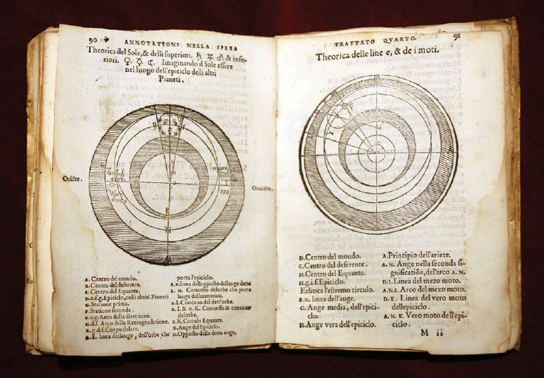c. 1230
De Sphaera
John of Sacrobosco (c. 1195–c. 1256)
The slow emergence of western Europe from the Dark Ages coincided with the founding of the world’s first universities (in Bologna and Oxford) near the end of the eleventh century. As more institutions of higher learning were founded, a need arose for scholarly works to serve as textbooks for the students. Printing books in medieval Europe was expensive and cumbersome, and so only a small number of standard textbooks proliferated in certain fields.
The first standard textbook for astronomy that was used throughout western Europe was a tract called De Sphaera, published c. 1230 by the English monk and astronomer John of Sacrobosco. Sacrobosco taught at the University of Paris and was a firm believer in Ptolemaic cosmology. Much of De Sphaera is a summary and review of the Almagest, but the text is also augmented with more “modern” ideas and discoveries from Arabic Astronomy and their nascent field of Experimental Astrophysics, which was far more advanced than European astronomy in the Middle Ages.
In addition to its review of Ptolemy, De Sphaera also included illustrated definitions of the celestial spheres and circles (likely intended for use as a tutorial for students learning how to use an armillary sphere), reviews of rising and setting times and circumstances for bright stars and the Sun, and descriptions of the motion of the Sun and planets using Ptolemy’s epicycle and deferent model. Sacrobosco made it unambiguous that the Earth is a spherical body and provided accurate explanations for solar and lunar eclipses.
If there had been a medieval best-seller list for books, De Sphaera would have been on it for hundreds of years. Many copies were transcribed by hand between the thirteenth and fifteenth centuries (hundreds of manuscripts survive today), and after the first printed edition appeared in 1472, more than 90 editions were printed over the following 200 years. It is described by historians as having been required reading in university astronomy classes well into the seventeenth century.
SEE ALSO Ptolemy’s Almagest (c. 150), Early Arabic Astronomy (c. 825), Experimental Astrophysics (c. 1000).
Pages 90 and 91 from a sixteenth-century edition of Sacrobosco’s astronomy textbook, De Sphaera (1230 CE), outlining Ptolemy’s geocentric model for the cosmos.
